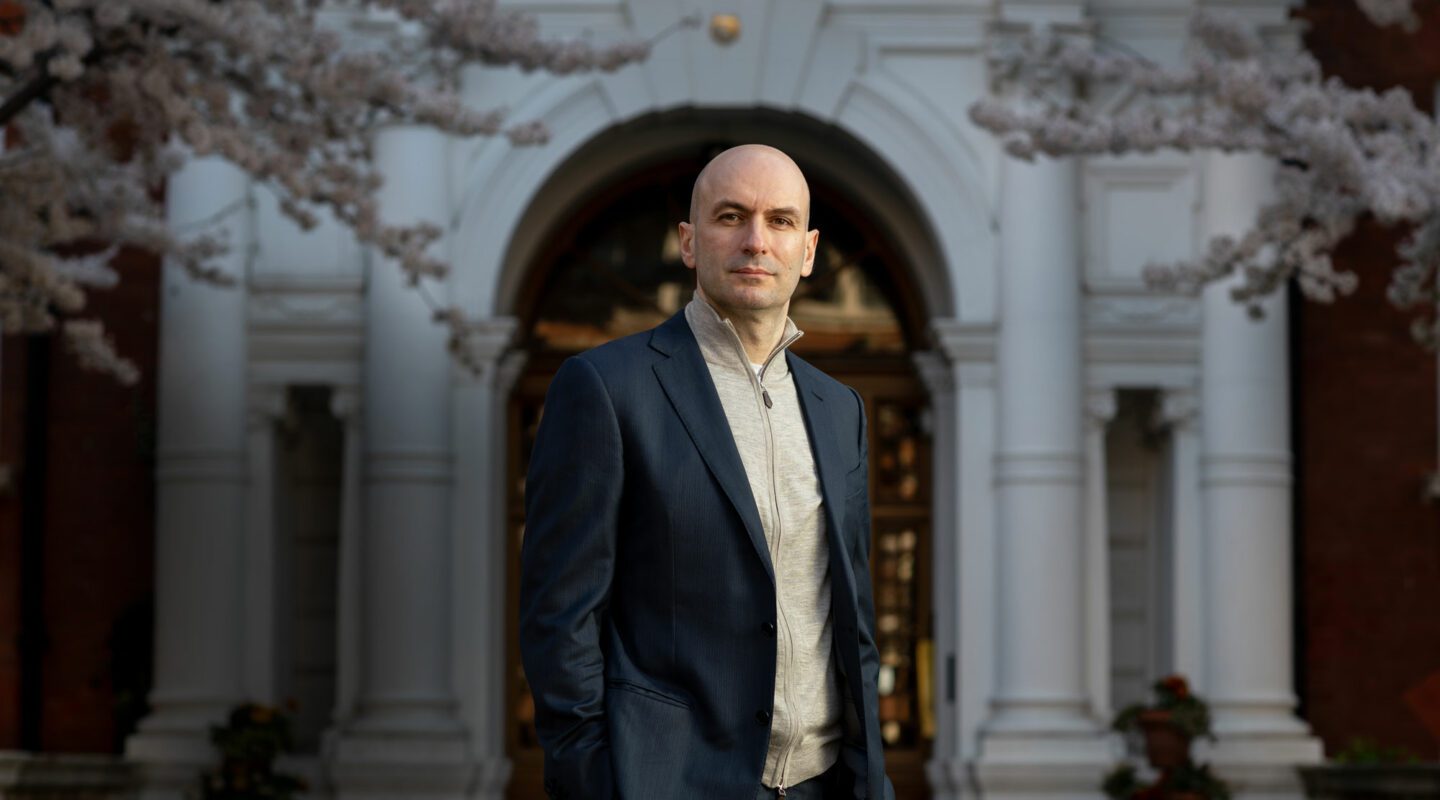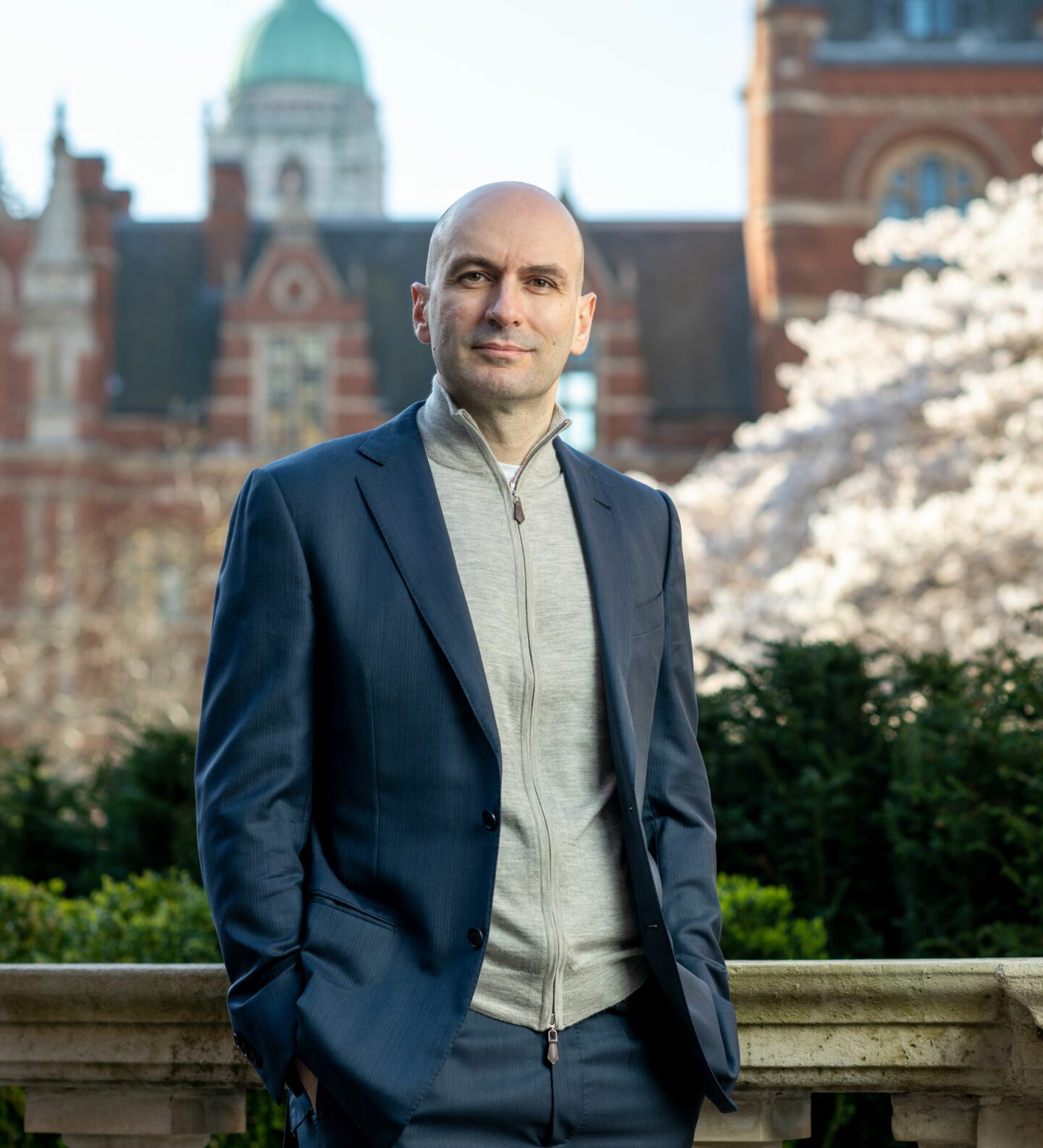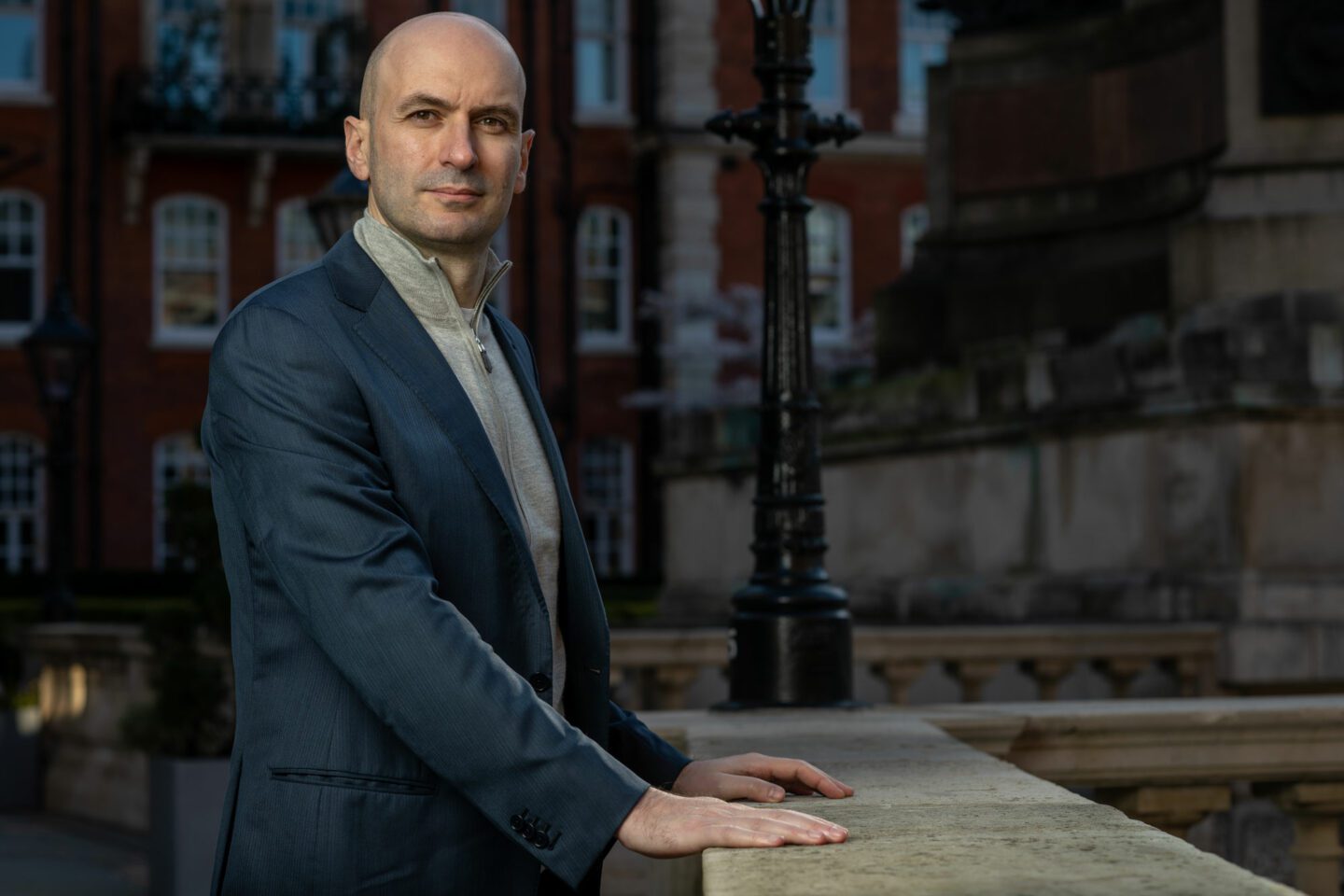
Bayforest’s founder, Doctor Theodoros “Theo” Tsagaris, is part of the Greek diaspora and is well versed in navigation. In his early days after school, he qualified as a naval captain and earned a Diploma for Navigation of Naval and Cargo Ships in Greece. He navigated through the treacherous Malacca Straits off the coast of Malaysia multiple times, where he was responsible for manoeuvring a large tanker through the narrow straits and preparing his crew for all unforeseen risks, which can include thunderstorms, piracy attacks, collisions with other ships and oil spills. Charting a course through volatile markets is something that the Bayforest team is similarly well trained and prepared for.
Starting as a statistician, I focused purely on data and modelling rather than any preconceptions or bias of what might work.
Dr Theodoros Tsagaris, Founder, Bayforest
They have recently proven adept at navigating the Bayforest investment strategy through the extraordinary economic and financial market gyrations around the Covid pandemic and Russia’s invasion of Ukraine. Bayforest has generated a Sortino ratio of well over two with positively skewed returns with virtually zero, and sometimes negative, correlation to conventional asset classes and other hedge fund strategies. Its closest competitors are more often proprietary trading houses rather than other hedge funds. Bayforest’s systematic strategy combines statistical arbitrage and market making models with proprietary data analysis, technology, and execution. Its systems and techniques are very advanced. The data inputs in one sense are quite traditional for a systematic manager in relying mostly on technical inputs but are also highly granular and require considerable computer power to digest and manipulate.
The genesis of the strategy lay in Tsagaris’ PhD titled Adaptive Regression Methods with Application to Streaming Financial Data, which he received from London’s Imperial College in 2010. The doctorate was awarded by the mathematics department and was distinguished in having had three supervisors across three disciplines within the department: statistical inference, data mining science and financial mathematics.

Dr Theodoros Tsagaris, Founder, Bayforest
The cross-disciplinary research was ambitious and challenging in seeking to use real-time streaming data to infer value and insights from noisy time series, which contained unusual non-normal statistical distributions. “We experimented with cross-disciplinary algorithms and through trial and error discovered an algorithm that seemed universal across all distributions of time series data. The PhD derived new formulae that were applied to existing practical problems, but less known at the time, such as real-time (or “online”) statistical arbitrage and portfolio optimization,” says Tsagaris.
A published thesis chapter became one of the highly cited papers in statistical arbitrage and has laid the ground for both low latency and longer-term strategies taking advantage of real-time data. Of course, the subsequent evolution of Bayforest’s models and algorithms has involved much work that has not been published, but has taken place inside hedge funds, where the team have diverse systematic investing experience.
Tsagaris did the PhD part-time, starting while he worked at BlueCrest, continuing when he moved to GSA, and both hedge fund managers are credited with sponsoring the research. These two firms – and later Tudor Capital – gave him a broad foundation of quantitative experience spanning trend following, equity market neutral, fixed income trading, statistical arbitrage, and market making across liquid asset classes. “Starting as a statistician, I focused purely on data and modelling rather than any preconceptions or bias of what might work. I carried out equity market neutral, fixed income arbitrage, trend following and statistical arbitrage strategies, trading with very short to medium term holding periods. More lately in a proprietary trading unit, I was trading futures, ETFs and FX, making markets in FX with daily turnover in high single digits billions of dollars,” he recalls.
We mostly focus on complex derived opportunities that are partially observable and more difficult to discover by traditional broker/dealer high frequency shops.
Dr Theodoros Tsagaris, Founder, Bayforest
Return profile
Bayforest’s strategy is broadly market neutral, trading relative value and has limited tolerance for directional risks. It is always hedged to some degree and continuously responds to real-time market dynamics. The opportunity set for the strategy has been stronger in more volatile markets, when a higher proportion of trades are profitable. “More variation around the mean with higher intraday trading ranges increases the opportunity set. Market unwinding is also profitable for the strategy because it leads to price insensitivity and sometimes forced selling. If people do not care about two or three basis points because they want to save their portfolio, that is a good market for us,” says Tsagaris.
Today, Bayforest’s models have a strong, stable edge and aim to find as many orthogonal (uncorrelated) signals as possible to boost forecast profitability. At the portfolio level, there has historically been a positive skew in the return pattern, seen in a banner month up double digits in March 2020 and a greater than +5% return in March 2022, while the worst drawdown has been 5.4% peak to trough using daily data, which is less than one standard deviation of average volatility.
Strategy volatility has averaged at about 7% but fluctuated between around 5% and 12% and the range exists to control risk, maximise opportunities and minimize costs. “The system needs some flexibility to increase risk to take advantage of better opportunities. There are some overriding caps on maximum volatility but keeping volatility constant would not be desirable as it would incur additional transaction costs,” says Tsagaris.
Volatility is however a crude measure of risk for a leveraged and roughly market neutral portfolio, where correlation patterns can be more important. Bayforest runs stress tests over millions of scenarios for every position. “The worst-case scenario for the strategy would be some sort of shock or discontinuous event, combined with a breakdown or inversion of normal correlation patterns, that was instantly reflected in prices. The models would then may not have enough time to adjust. This would also be negative for many other hedge fund strategies,” says Tsagaris.
The firm’s differentiated return profile comes from facets including its models, data, people, technology, and execution.

Models and techniques: real-time testing, Bayesian statistical distributions and machine learning
Most quants compare in and out of sample results to test robustness, but Bayforest’s world is moving too fast to do this. “For us, everything is effectively out of sample, because it is continuously updated in real-time. The systems are constantly learning and adapting, based on machine learning and artificial intelligence algorithms. We view machine learning as just a pipeline of statistical inference algorithms,” says Tsagaris. These pipelines use Bayesian statistical methods, which contribute part of Bayforest’s name, including for calculating VaR (Value at Risk) and CVaR (Conditional Value at Risk) tail risk.
Models are partly inspired by a distinctive approach to certain types of mathematical problems. In maths a “well posed problem” could have a single solution that changes in a stable and predictable way as inputs move, and some approaches to systematic investing essentially make simplifying assumptions to build a model within this framework. Other groups of quantitative investors view this as an artificial exercise that is too far removed from reality and argue that quants need to face up to the true complexities of financial markets, take the bull by the horns, and grapple with an “ill-posed problem”, which could have multiple solutions, that can also jump around in a messy, noisy and unpredictable way as the data inputs move. Even so, some degree of regularization may be needed to stabilize the formula and narrow down the range of solutions, and Bayesian statistical methods are one way to tackle such problems. “Bayesian statistics is mostly used as a form of regularization, which is a very well-known technique to deal with ill-posed problems. We are using both proprietary and published techniques,” says Tsagaris.
Dynamic optimization, portfolio construction and risk management
The models dynamically and automatically optimize several parameters. They adapt trade size depending on market dynamics, vary signal duration with the market environment, and can adapt to the execution behaviors of other market participants. “We are trying to address correlation changes in real-time. Market dynamics alter continuously, and the estimators adapt their estimates in real-time to capture the true nature of the environment at the time, unlike offline techniques that are often poor approximations of the environment states,” says Tsagaris. Regime changes can cause setbacks for some quantitative strategies, but Bayforest aims to be nimble enough to cope with them. “Dynamic optimization mostly ensures that we are maximally diversified upon changes in regimes,” he adds.
Data sourcing, digestion, and inference
Proprietary data analytics engines and infrastructure are another important source of edge. “We do not use vendors’ data in core signal functions. We connect directly to the data source whenever possible. Co-location with exchanges is essential to receive vast volumes of data. Each exchange provides tens of GB of data, and we need the appropriate bandwidth cross-connects to consume the data. We found that third party vendor apps were not suitable for this task and the specific objectives we are seeking,” Tsagaris explains.
Any event that may be contributing to market volatility is a potential data input for Bayforest’s shorter term trading strategy. Some forms of alternative data that do not allow for accurate timestamps are not used. Bayforest have direct feeds and receive all exchange network packets, building the order book in real-time. “We require full understanding of every tag, condition, metadata, so we work with data at the most granular level,” says Tsagaris. Accurate time stamping and clock syncing is essential for aggregating data from multiple sources, which is a substantial task.
Some market trades are done in dark pools, where data is less available, so part of the strategy is based on drawing statistical inferences from partial data. This needs to be done continuously and efficiently, constantly updating the exercise. “The data augmentation process is proprietary, for example in terms of how we can draw inferences about partially observed variables,” says Tsagaris.
500m
Bayforest started out with tens of millions in managed accounts. Assets have grown to over $500 million as of end April 2022.
Proprietary technology
Proprietary technology is thus vital to the strategy. “Our technology is very efficient. We have built infrastructure that can draw inference on billions of data events per day with minimal latency. We do this to counter or profit from naive market making strategies, because we understand how much money is left on the table from inefficient trading,” says Tsagaris.
Bayforest has reinvested millions of its income into building this proprietary technology and intellectual property, in terms of computer power, data and its own co-located servers for low latency trading. Away from low latency and co-located servers, the research technology resides in the cloud, which offers a more flexible and elastic cost base. “The cloud has reduced costs compared with ten years ago. Infrastructure as Code (IaC) allows us to instantly spawn multiple instances when required and as long as required,” says COO David Beddington.
Billions of data points are ingested and over a million lines of code is currently used throughout production and research. Programming languages used are C++, Python, and Rust. “Field Programmable Gate Arrays (FGPAs) are not essential, but they are useful in data consumption because of their determinism,” says Tsagaris. FGPAs can offer low latency and can be easily tailored to the task. It is relatively difficult to program and configure FGPAs, but that is precisely the sort of challenge that ambitious quants relish.
Luring tech talent with the latest stack
While some of Tsagaris’ former colleagues have been hired, financial experience is not needed for all technology roles. Unlike many expanding firms, Bayforest does not typically hire portfolio managers due to its focus on team project-based research and proprietary software. Academic backgrounds tend to be in maths, physics and engineering but “illiterate scientists” are not welcome. “We look for people with clarity of thought who are good communicators and can produce original research. Some staff may continue publishing academic research, though they tend to lose interest in it over time,” says Tsagaris.
Bayforest empowers its quants with considerable responsibility and leading-edge technology.
“Attracting top tech talent is less about job titles and more about the quality of work. They want the latest technology stack, which we have, and tech giants often do not. They want to develop transferable skills and do not want to just maintain a database,” says Tsagaris.
The atmosphere is collaborative. Though some staff have recently been working from home, or split between home and the office, the ethos is very much an open plan office with a flat structure rather than hierarchy. People get rotated around functions, collaborate, and participate in peer review exercises. “I had been the administrator of AWS and responsible for networking but have now passed that on to someone else,” points out Tsagaris.
ESG
Bayforest is researching ESG with the same academic rigour as its investment models. “The priority project is carbon data. We aim to define and quantify the carbon exposure in our portfolio,” says Beddington. There are different perspectives on how to quantify carbon for quantitative strategies and many questions do not yet have clear or industry standard answers. “If a strategy is broadly market neutral over time does its gross or net exposure count?” asks Beddington. Bayforest could contemplate trading carbon emissions, which would add liquidity to this market. At the corporate ESG level, Bayforest’s governance considers the recommendations of the Standards Board for Alternative Investments and AIMA’s research on the topic. The current ESG policy excludes certain weapons companies making certain types of military hardware such as cluster munitions and mines, which the team is grateful for given the events of 2022.
Future evolution: an expanding investment universe
The models are constantly evolving fast in ways that are not easy for an outsider to ascertain, though Bayforest does expect to enhance intraday liquidity provision and demanding strategies. The roadmap for growing the investment universe is clearly identified.
Equities
“The addition of North American equities, which are lowly correlated to futures, raises the risk adjusted returns,” says Tsagaris. Over time, adding European and Asian equities could expand the universe to over 5,000 equities. Order book analysis will be tailored to the microstructure of local markets.
Bayforest are not trading “pure” arbitrages in the strictest sense, but rather taking a probabilistic view on relative value. “We mostly focus on complex derived opportunities that are partially observable and more difficult to discover by traditional broker/dealer high frequency shops,” says Tsagaris.
Currencies, rates, and credit
Bayforest is on a hunt for alpha through a focus on research and the expansion of uncorrelated sources of returns within the portfolio, such as currencies and bonds which are already traded as futures. However, adding NDF (Non-Deliverable Forward) FX will be used to access emerging market currencies, while rate swaps can access more emerging market interest rates than is possible via futures.
Bayforest already trade commodity futures and expects to access new markets and diversification from OTC commodities, which have been a successful diversification route for several CTAs. “They are less crowded and certain types of strategies seem to work satisfactorily,” says Tsagaris.
Adding OTC markets will also bring its own challenges in terms of data and execution. Different counterparties provide different quotes, and to optimize FX execution Bayforest will need to develop its own internalized system to aggregate quotes from different venues. “The old days when Reuters and EBS dominated FX market making are long gone. Using multiple venues to get better price discovery is the norm in the FX market. We are looking for counterparties with good internalization, consistently good pricing/size and minimum impact post trade,” says Tsagaris. Beddington previously worked for a dedicated FX hedge fund, Dacharan.
Asset growth and long only equity roll out
Bayforest started out with tens of millions in managed accounts. Assets have grown to over $500 million as of end April 2022, and a Cayman fund has been launched. Investors with publicly disclosed allocations to Bayforest include some of the largest financial institutions.
Bayforest has adapted to virtual due diligence during the pandemic, but equally is very much looking forward to resuming the onsite due diligence that some investors insist on. Geographically, the US is unsurprisingly the largest source of assets, followed by EMEA and Asia.
Bayforest may soon offer a long only version of the strategy. “We have had reverse enquiries about enhanced equity oriented long only strategies, which could be much more scalable and would command lower fees,” says Kelly Rajpaulsingh, Head of Investor Relations. “From a business perspective they would help to cover high fixed costs and would not cannibalise the capacity and alpha of the flagship strategy,” says Beddington.
- Explore Categories
- Commentary
- Event
- Manager Writes
- Opinion
- Profile
- Research
- Sponsored Statement
- Technical